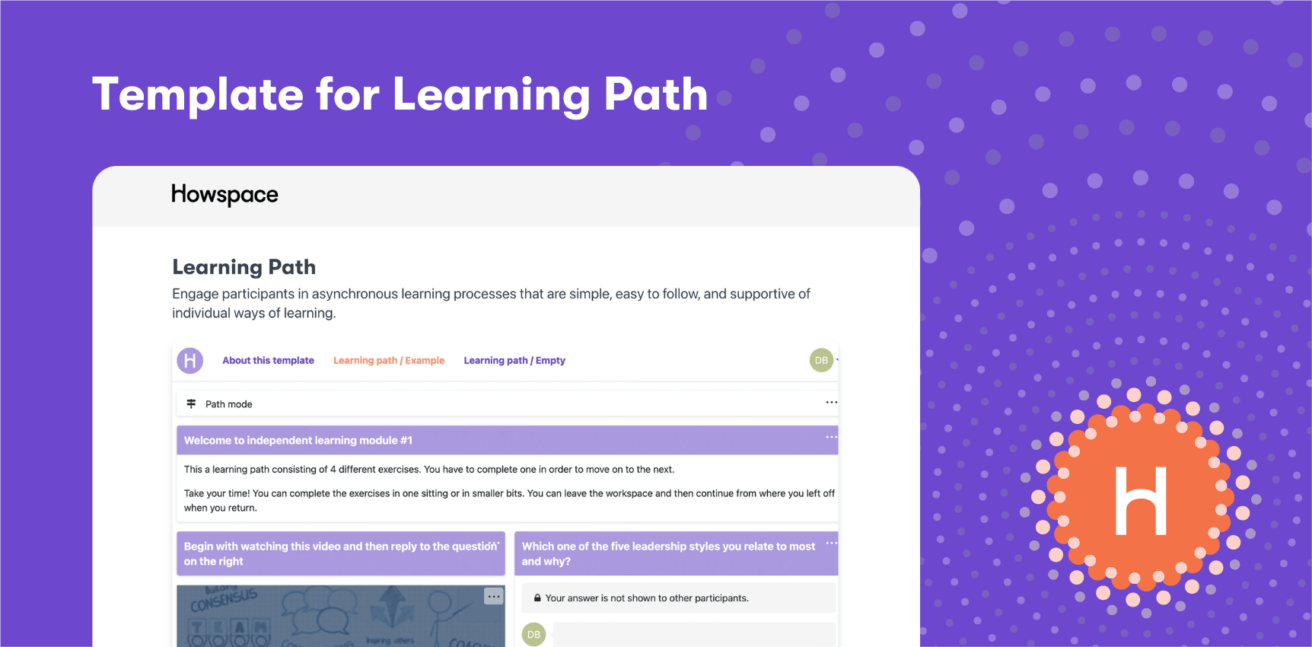
What can enterprise learning do for your business?
Workplace learning comes in many shapes and sizes. Some approaches are more innovative and push the boundaries, while others remain firmly stuck in the past.
Of course, learning on the job is part of any role but in many organizations, workplace training is stagnant. Employees get taught the initial nuts and bolts of what they’ll need to do, but then they’re left to their own devices and told to “learn on the job.” A strong enterprise learning and development strategy will make on-the-job learning more iterative and impactful, and equip your company for the future.
This article examines enterprise learning and development, diving deep into how it can help your company reach new heights.
What is enterprise learning?
In a sense, enterprise learning is workplace education on demand. It refers to the learning principles and practices that enable your employees, customers, and partners to access the information and training they need whenever they need it.
Simply put, enterprise learning is a system that enables ongoing learning and development within an organization. It involves people, culture, instructional content, processes, and technologies.
Why is enterprise learning so crucial?
Continuous learning and development are a must due to quickly evolving work demands and skill requirements in our current work environment. Teams need to keep pace with this continual, bullet-speed evolution.
Plus, employees today prioritize opportunities for learning and development, meaning learning is the key to staying competitive as an employer in today’s job market and reaching big-picture business objectives.
Let’s go through some more benefits of enterprise learning for organizations today.
Empower employees
When organizations decentralize educational offerings, they empower individuals to grow their skill sets and keep up with industry changes. Rather than mandating employees to go through a one-dimensional learning process, leaders should be able to personalize employees’ learning journeys according to their needs.
Employees should be able to learn independently—wherever and whenever they want—and to engage and reflect with their colleagues. By engaging in meaningful conversations, employees can exchange ideas, brainstorm, and arrive at decisions that drive progress and impact within the organization.
Establish a cohesive learning environment
Many organizations struggle to create a consistent, well-functioning learning environment. They might have a few different functioning aspects of workplace learning but haven’t tied the whole thing together to create a learning journey for employees.
A fully-fleshed enterprise learning management system should connect all the dots. Employees and managers should have a clear understanding of the bigger picture, including the organization’s specific needs for training improvements.
By leveraging enterprise learning to its fullest, you’re going beyond the organization’s parameters and giving employees an alternative channel to learn, grow, and develop. The result? Improved alignment at the enterprise level.
Build trust with customers and partners
Many organizations use extended enterprise learning to offer partners, resellers, or customers a window into their operations, products, and services.
By gaining a deeper understanding of your offerings—and your company vision—these external parties will be better equipped to sell your products or services. Extended enterprise training programs also help your customers and partners feel more in the loop, which builds trust and enables you to create a stronger brand.
Get a big return on investment
Enterprise learning is a strategic investment that delivers a big return. For one, when employees feel their organization supports their growth and development, they’ll perform at a higher level and stay with the company longer.
Enterprise learning also decreases employee turnover and customer churn, saving your organization a fortune every year.
How can you be successful with enterprise learning and development?
Go beyond standard training
To be successful with enterprise learning, you need to go beyond the traditional training box. Traditional learning management systems (LMSes) typically help organizations deliver mandatory training such as fire safety, health and safety, or data governance.
However, more complex enterprise learning programs (like diversity or leadership training) should go beyond one-way content delivery, long manuals, and tough-to-digest course materials. To make enterprise learning stick, create a collaborative learning environment where people can work and reflect together and form a learning community.
Focus on collaborative learning and co-creation
Up to 20% of learning happens in developmental relationships, according to the 70/20/10 rule. To build a successful learning organization, look for an enterprise learning platform that supports co-creation and collaboration.
While tools like Slack and Microsoft Teams are good to a certain extent, they really only allow for unstructured, one-way communication. Without the appropriate context and meaning, these tools are forgotten and waste time.
With a collaborative online platform like Howspace, you can encourage peer-to-peer learning and guide people on a shared learning journey.
Prioritize data collection and analysis
Data collection should be built into your enterprise learning system. It should be easy for your training team to understand the data and formulate meaningful assessments and analyses based on results and participants’ discussions.
For example, Howspace’s built-in AI tools make it easy for you to understand people’s opinions and experiences at a glance, and keep meaningful conversations going. Rather than relying on your own judgement to make sense of participants’ inputs, the AI allows you to analyze data objectively—machines don’t play favorites.
Choosing the right platform for enterprise learning
Given how crucial collaborative learning is to successful enterprise learning, the tools you use should focus on facilitating co-creation.
AI-based tech is revolutionizing enterprise learning and development. Such technology allows leaders to digest vast amounts of participant dialogue—even with hundreds of participants scattered across the world.
At Howspace, we provide our customers with enterprise learning solutions that foster success through the social, collaborative process. With the Howspace platform, you’ll be able to engage your team to keep improving together and working toward one common goal: building your company for long-term growth and expansion.
Check out our template for creating a learning path! 💡 This template showcases the use of the Learning Path feature in Howspace. You can use it in multiple ways, but it’s at its best when you want to offer information and tasks to your participants in bite-size bits when working asynchronously.
Already a Howspace-user? You can add the template to your account here.

You might be interested in these as well
View all
E-learning vs. blended learning — definitions, differences & use cases
The terms e-learning and blended learning are often used interchangeably, which is hardly a problem in casual conversation. However, since […]

10 Ways Howspace Uses Howspace
Explore 10 fun and creative ways that we at Howspace actually use Howspace to collaborate and get work done!

The future of learning: How to design learning experiences for the hybrid world
It’s no secret: work as we know it has changed for good. COVID-19, the Great Resignation, and the rise of […]